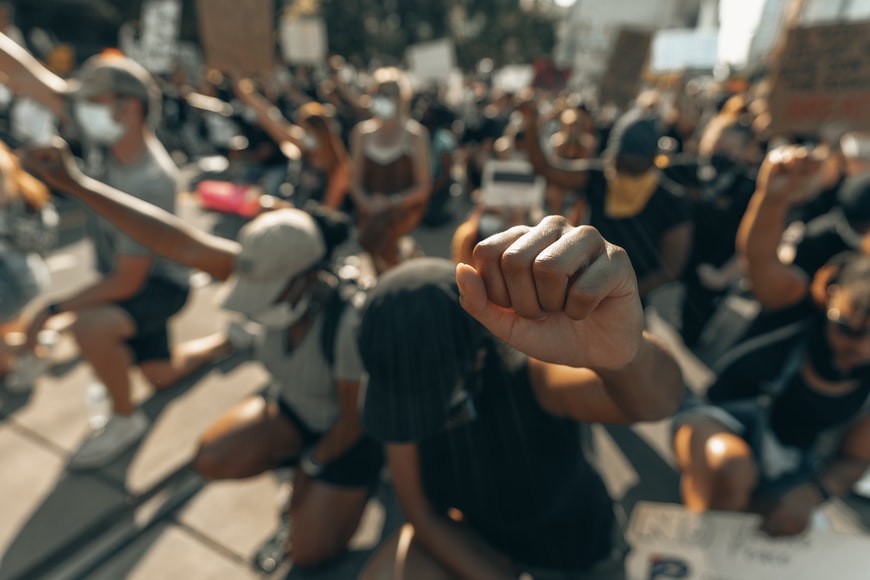Similar to other countries in the Americas, Brazil has a long history of racial discrimination that is rooted in society, culture, politics, and judicial processes. We cannot discuss race in Brazil without acknowledging it as a structural problem that is deeply connected to socioeconomic inequality and violence. Brazil has high rates of violence and inequality, but some groups are disproportionately harmed by these social issues – and often, the outcomes are fatal.
When it came to the enslavement of Black peoples, Brazil was not an exception: it abused and exploited thousands of people. Yet the violence against Black communities did not end in 1888, when slavery was formally abolished. When enslaved individuals were freed, they received no financial compensation, nor were there any efforts to integrate them in society. During the post-slavery period, the Brazilian government encouraged white Europeans to migrate to Brazil in a sickening attempt to “whiten” the population. These whitening policies (políticas de branqueamento), which also occurred in several other countries in Latin America, further contributed to the segregation and marginalization of Black people in Brazil.
In urban settings, Black populations were pushed to the margins of society. Racist policies and the lack of socioeconomic support given to formerly enslaved people resulted in the creation of Favelas, slums located within or in the outskirts of urban centres, which suffer precarious housing structures and high levels of violence. Favelas are spread across the country and they are predominantly Black – 67% of the approximately 17.1 million people that live in favelas are Black. Children and youth in favelas may experience food insecurity, financial instability, healthcare, infrastructure, and low-quality education. For instance, in 2017, 73% of illiterate people over 15 years of age were Black. The unequal access to education that disproportionately affects the Black community further perpetuates racial inequality in Brazil, forcing Black individuals to remain in low-income, often violent areas. In addition to struggling with poor social support structures and unmet material needs, high crime rates and subsequent police interventions expose Black youth to concerning levels of violence, injury, and death.
Statistically, Black boys are the main victims of violent deaths in all age groups. Of these violent deaths, many occur during police interventions. In 2020, 787 children and teens (10 to 19 years old) were killed due to police interventions in 24 Brazilian states (data from the states of Bahia, Goiás, and the Federal District were not included). In other words, more than two children between the ages of 10 and 19 are killed every single day in Brazil – and most of them are Black.
Since the murder of George Floyd in the United States (U.S.) and the subsequent amplification of the Black Lives Matter movement, Brazil has become more aware of the disproportionately high death rates of Black children and youth. Similar to the U.S., the Black Lives Matter movement in Brazil is tied to the police. While they are intended to fight crime, Brazilian police forces are just as dangerous to the Black community.
“Bala perdida” (missing/lost bullet, in direct translation) is the term used when a civilian is accidentally hit by a firearm during a confrontation between police forces and offenders. However, in Brazil, these “missing” or “lost bullets” seem to always find the same bodies. It is clear that there is a systematic problem that Brazilian police forces, government structures , and society are failing to address – and it continues to cost the lives of Black youth.
The death of João Pedro Mattos Pinto, a Black 14-year-old boy, during a police operation in Complexo do Salgueiro, in the metropolitan region of Rio de Janeiro, illustrates police mismanagement of “missing bullet” victims. During the May 2020 operation which had the goal of apprehending drug dealers in the region, João Pedro and his friends were playing at his house when both the Federal and Civil police barged in the neighbourhood and started shooting.
João Pedro was still inside his house when a “missing bullet” perforated his belly. His father and aunt ran back home as soon as they heard the shootings, but they were not allowed to enter their own property. By then, João Pedro had already been taken away by a police helicopter, with no family member to accompany him. Without knowing where the boy had been taken, his family spent the night searching for him in different hospitals. His body was found 17 hours after his death. João Pedro died alone, and his family did not even get to say goodbye.
Other victims of “missing bullets” in recent years were Ágatha Felix (8), Kauê Ribeiro dos Santos (12), Kauan Rosário (11), Ketellen Umbelino de Oliveira Gomes (5), Davi Gabriel Martins do Nascimento (17) – all of them were Black children in socioeconomically underprivileged neighbourhoods. The same pattern would not be tolerated by society if the victims were wealthy white children. The death of any child is a tragedy, let alone the preventable death of any child. The preventable death of a particular group of children and the silence of society and the state’s political institutions is infuriating.
When will Brazil see that sending armed officers to low-income neighbourhoods filled with children is not the solution for crime? When will badges stop shielding their users from facing justice?
Edited by Riyana Karim-Hajiani

Maria Lima Fernandes is a U0 student in the Faculty of Arts. She hopes to pursue a double major in Political Science and International Development Studies. Her areas of interest include culture, politics, social justice, and their intersections. She is passionate about women’s rights and feminist influences around the globe.

